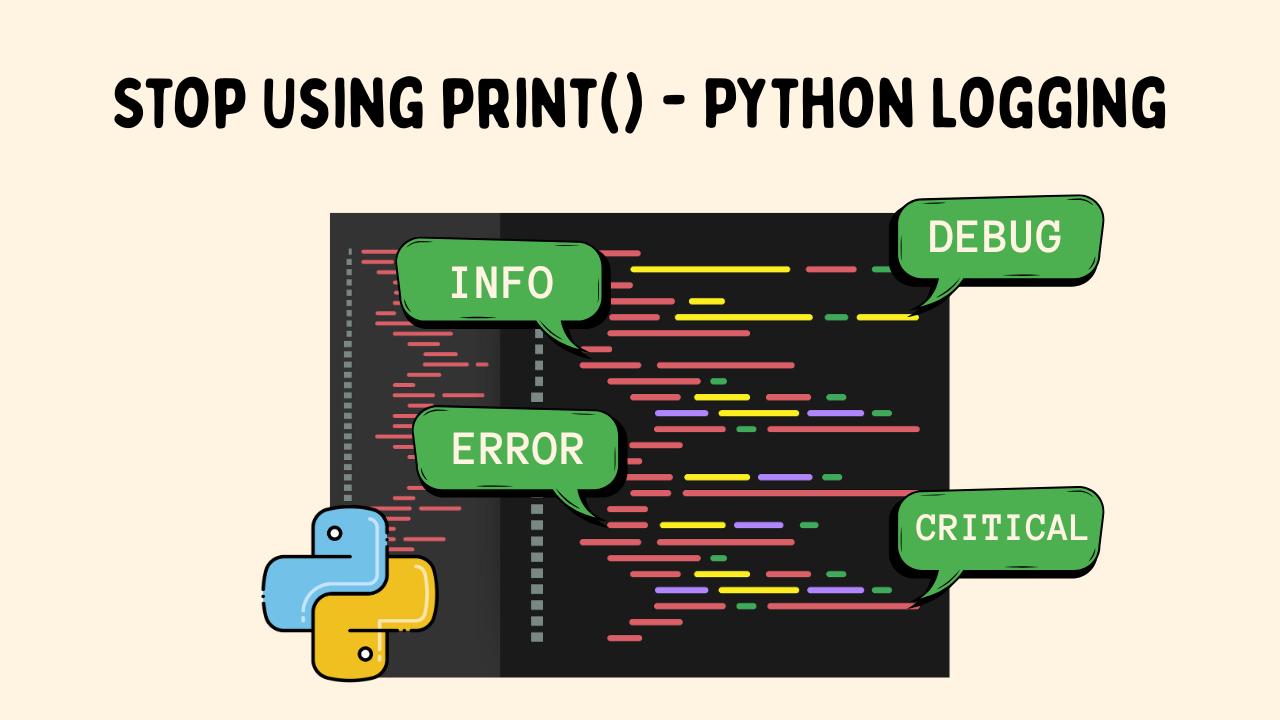Stop Using print(): The Ultimate Guide to Python Logging for Better Debugging
Discover why using Python's logging module instead of print() is the smarter choice for debugging, tracking errors, and building production-ready applications.
Ask just about any Python developer how they first started fixing bugs in their code, and I’m pretty sure most will say they used the print() statement, I know I did. It’s quick, simple, and doesn’t take any setup—so why not, right?
But as your projects get bigger and more complicated, print() starts to fall apart. You can’t control what it shows, it’s hard to filter the messages, and trying to manage print statements across a bunch of files becomes a total mess.
It’s kind of like trying to find a needle in a haystack—and instead of sorting the hay, you just keep adding more and hoping the needle pops out. That’s basically what happens when you rely only on print() for debugging.
The better, smarter way to handle debugging in Python is by using logging. Logging doesn’t just tell you what happened—it also tells you when, where, and under what conditions it happened.
And the best part? You don’t have to clutter your main code or mess with your app’s core logic to get all that info.
In this article, I’ll walk through why logging should be your go-to tool for debugging and keeping an eye on your Python apps. We’ll look at how it works, how to set it up, and how to use it in real-world situations.
Building on simple, practical steps, this guide has everything you need to get comfortable with logging in Python.
By the time you’re done, you’ll know how to use logging like a pro—and you’ll finally be ready to stop using print statements for good.
If you haven’t subscribed to my premium content yet, you need to check it out. You unlock exclusive access to all of these articles and all the code that comes with them, so you can follow along!
Plus, you’ll get access to so much more, like monthly Python projects, in-depth weekly articles, the '3 Randoms' series, and my complete archive!
👉 Thank you for allowing me to do work that I find meaningful. This is my full-time job so I hope you will support my work.
If you get value from my work, consider joining premium. It really helps me keep going and lets me know you’re getting something out of my work!
If you’re already a premium reader, thank you from the bottom of my heart! You can leave feedback and recommend topics and projects at the bottom of all my articles.
👉 If you get value from my work, please help me out, leave it a ❤️, and share it with others who would benefit from this. Thank you so much!




